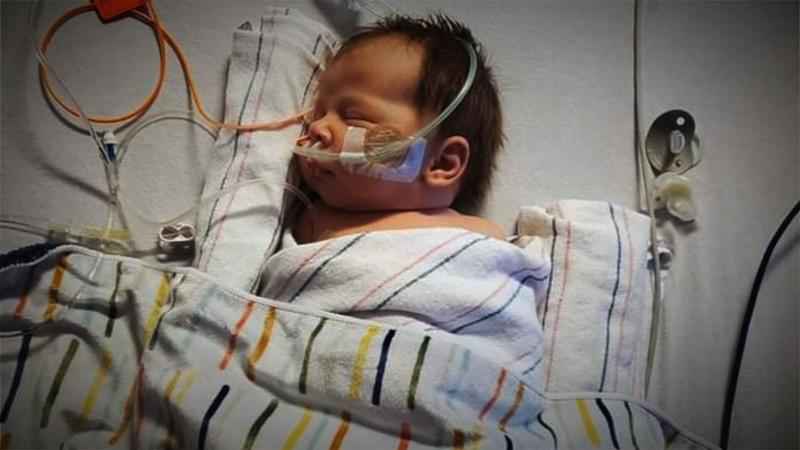Doctors alarmed as surge in respiratory disease leads to more children in hospital beds
[anvplayer video=”5060218″ station=”998122″]
Minnesota hospitals are overrun with pediatric patients as out-of-season respiratory illnesses surge across the state.
"It’s really been quite overwhelming for all of us because we don’t even know what to expect," said Dr. Stacene Maroushek, a pediatrician and infectious disease specialist at Hennepin Healthcare. "Normally, before COVID, they all had their season. We knew what viruses normally show up in what season, but COVID has thrown all of that completely on its head."
Maroushek said with kids back in school, multiple illnesses are now circulating at once, including COVID-19, respiratory syncytial virus (RSV) and the flu.
She says her pediatric intensive care unit at Hennepin County Medical Center in Minneapolis has been full for weeks.
"These kids are coming in droves right now. We have our normal appendicitis, broken arms, things like that and now we have all these respiratory illnesses on top of it," Maroushek said.

[KSTP]
She said, until this past week, she hadn’t seen a single influenza hospitalization in 18 months.
"Then, this week, I’ve either seen myself or heard of half a dozen cases, which is very, very early for flu," Maroushek said. "It is very unusual and very frightening because people aren’t thinking about flu in September. People haven’t had their flu vaccines yet. I mean, I went home and was like, ‘Oh no. Here it comes.’ We’re going to have a whopping end to 2021."
Laboratory data submitted to the Minnesota Department of Health shows respiratory viruses have surged in the state over the past six weeks, with particularly high numbers of RSV, which can be severe in babies.
The peak season for RSV usually begins in late fall and runs through the winter, but metro hospitals have seen rising case counts throughout the summer.
"It happened so fast and it came out of nowhere," said Vanessa Rokhman, whose 4-week-old son was recently hospitalized.
Rokhman said her 4-year-old daughter came home from day care with a cough earlier this month and, not long after, her newborn started struggling to breathe.
He was admitted to the pediatric intensive care unit at Children’s Minnesota in Minneapolis and diagnosed with RSV.
"Within 24 hours I would say, he was going from a little bit congested to having retractions when he was breathing — head bobbing, you could tell he was just really struggling to breathe," Rokhman said. "They just instantly put him on oxygen, high-flow cannula, a feeding tube and IV. Watching your tiny little 4-week-old baby have all that stuff to him was really scary."
Children’s Minnesota provided this statement to 5 EYEWITNESS NEWS:
"Like many health care organizations, Children’s Minnesota has seen an increase in the number of children and teens coming to our emergency departments and clinics. The increased volumes are due to an unseasonal increase in respiratory illnesses, including respiratory syncytial virus (RSV). This increase has held steady since early summer. We’re also seeing an increase in the number of kids seeking asymptomatic COVID-19 testing. We urge families only seeking COVID-19 tests to go to local retail pharmacies or one of the many Minnesota Department of Health sites.
"The effects of staffing shortages are being felt all across the Twin Cities. In the face of a difficult labor market, we are utilizing more aggressive strategies to recruit and hire critical staff to support the care of our patients and their families.
"Despite the increase in volumes and staffing shortages, Children’s Minnesota is committed to providing excellent care. If a child is very ill or injured, we are taking every approach to ensure they will be seen in a prompt manner and beds are available for patients who need them."
The Minnesota Department of Health Response Capacity Dashboard shows staffed ICU beds in the metro are at 98.3% capacity and staffed non-ICU beds are at 98.6% capacity.
"That’s the reality of what’s going on right now in medicine is we’re strapped and we’re really looking for some relief from these viruses soon," Maroushek said.
She noted the capacity issues at hospitals are even worse because some health care workers have to stay home with their own sick kids, causing a staffing shortage at a time when they’re already extremely busy.
The Minnesota Hospital Association provided this statement:
"Many hospitals and health systems are seeing an increased volume of patients requiring care – mostly due to general increased demand. Summer is generally a busy trauma season, and that is holding true this year. We are also seeing patients coming in with the usual health issues like stroke, heart conditions and mental health. People may be taking time now to make appointments for care that they had put off during the winter and spring. In addition, we are seeing a steady increase in COVID-19 patients and we are remaining watchful of the trends. Our hospitals and health systems continue to provide excellent care to patients when and where they need it."